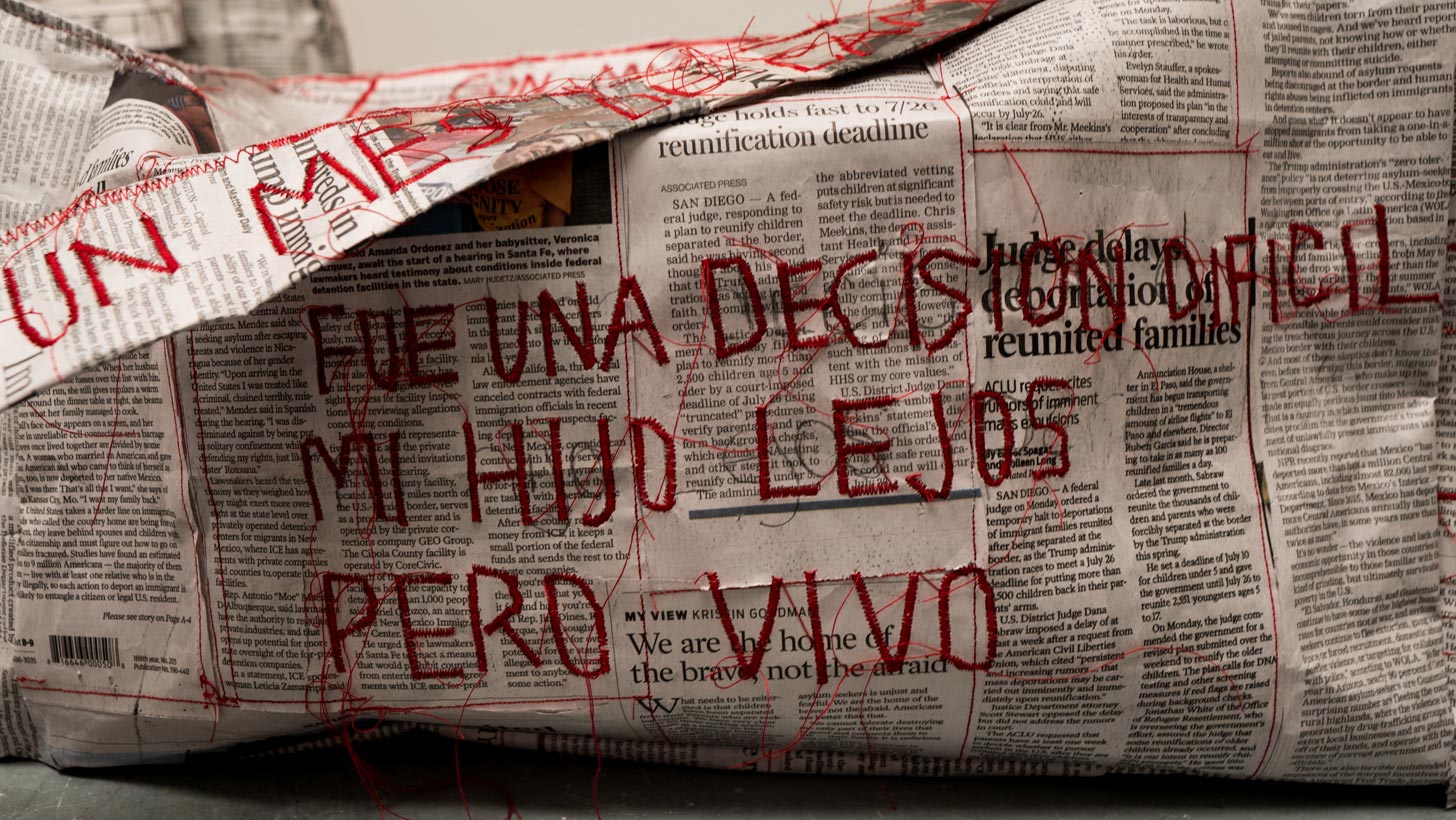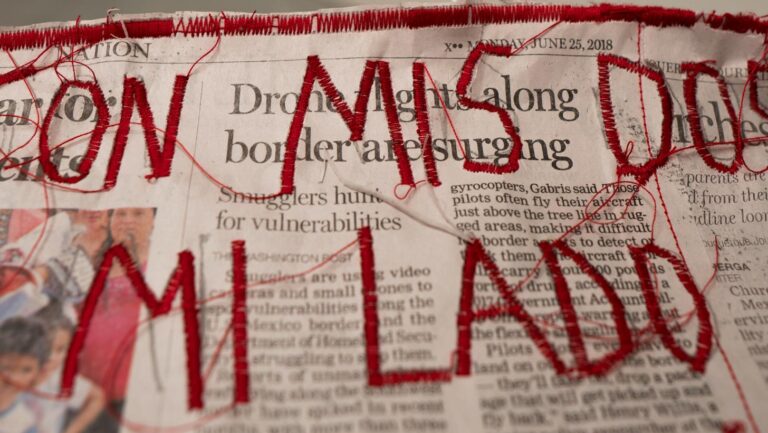Arts Interview: Stitch In Print
Kemely Gomez’ Work Shares Authentic Narratives Of Migration


Gomez embroiders the stories of migrants over newspaper headlines
Kemely Gomez
Latest Article|September 3, 2020|Free
::Making Grown Men Cry Since 1992


Gomez embroiders the stories of migrants over newspaper headlines
Kemely Gomez


